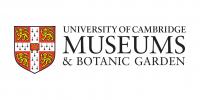
Submitted by Tricia Harnett on Mon, 05/02/2024 - 11:18
Happy LGBTQ+ History Month! At the Museum, we’re proud to announce that one of the ways we’re celebrating is to launch our new permanent trail, Pride in Nature, which explores LGBTQ+ themes across the natural world. Anyone visiting our galleries can now pick up a free trail guide and find fascinating things about some of the animals we have on display here, from penguins to lions and flamingos to lizards.
Back in 2018, we started running the first guided tours in a British natural history museum to explore LGBTQ+ themes. The tours are still going strong today, but we wanted to make the stories from the tour available to anyone visiting, any time. That’s what this new trail does.
People might wonder what natural history has to do with LGBTQ+ stories, and there are three main aims for the trails which hopefully answer that.
We want to show how queer perspectives help us better understand the natural world. Descriptions of the infinite diversity of the natural world have sometimes been constrained by human social prejudices. It helps us better understand what’s going on in nature if we let those prejudices go.
We want to explain how ‘science’ has hidden examples of same-sex sexual behaviour in animals, and failed to acknowledge or appreciate the significance some of the remarkable diversity in bodies and behaviour that exists in the natural world.
Natural history is not simply a listing of facts, but is affected by whether and how we choose to explain them. For example, when a male giraffe sniffs the genitals of a female, or mounts her, the interaction would be described as primarily sexual. However, equivalent behaviours are not always considered evenly. The scientist Anne Innis Dagg pointed out that when a male mounts another male, this kind of behaviour would commonly get described as one male exhibiting ‘dominance’ over the other, rather than something primarily sexual. In these cases, the validity of homosexual behaviour gets diminished in favour of a heteronormative perspective that is neither a rational nor scientific. As it turns out, the vast majority of sexual behaviours in giraffes are between two males.
This brings me to the third and perhaps most important aim of the trail. We want to show there is no truth to the claim that homosexuality is ‘unnatural’. It’s important to say that LGBTQ+ people should not need to look to the animal kingdom (or anywhere else) to justify themselves. But it can be powerful to know that same-sex sexual behaviours are now known to be a large part of the lives many hundreds of species.
If you want to explore some of the stories that fit into these themes, please do come to the Museum and pick up a free Pride in Nature trail, and look for the rainbow labels in the displays across the gallery. You can also book onto one of our regular free Bridging Binaries tours, which run throughout the year (and not just LGBTQ+ History Month), and read more here about the animals we discuss.
Article written by Jack Ashby, Assistant Director at the Museum of Zoology, Cambridge
This trail is written by queer museum staff and volunteers, based on commissioned research by LGBTQIA+ tour-pioneer Dan Vo into the stories that lay hidden amongst the collections of the University of Cambridge Museums. With thanks to The Kite Trust for their advice.





